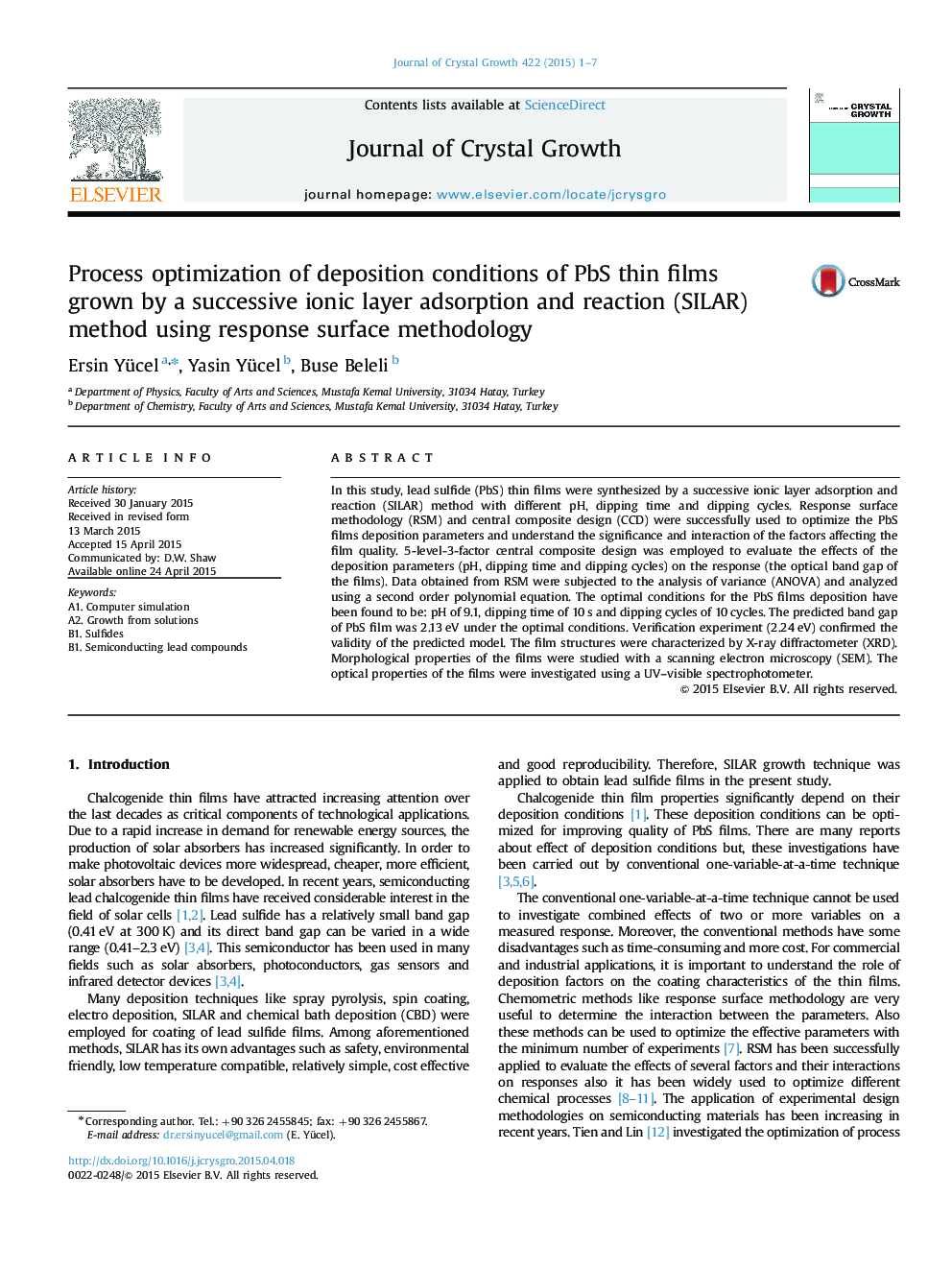| Article ID | Journal | Published Year | Pages | File Type |
|---|---|---|---|---|
| 1790034 | Journal of Crystal Growth | 2015 | 7 Pages |
Abstract
In this study, lead sulfide (PbS) thin films were synthesized by a successive ionic layer adsorption and reaction (SILAR) method with different pH, dipping time and dipping cycles. Response surface methodology (RSM) and central composite design (CCD) were successfully used to optimize the PbS films deposition parameters and understand the significance and interaction of the factors affecting the film quality. 5-level-3-factor central composite design was employed to evaluate the effects of the deposition parameters (pH, dipping time and dipping cycles) on the response (the optical band gap of the films). Data obtained from RSM were subjected to the analysis of variance (ANOVA) and analyzed using a second order polynomial equation. The optimal conditions for the PbS films deposition have been found to be: pH of 9.1, dipping time of 10Â s and dipping cycles of 10 cycles. The predicted band gap of PbS film was 2.13Â eV under the optimal conditions. Verification experiment (2.24Â eV) confirmed the validity of the predicted model. The film structures were characterized by X-ray diffractometer (XRD). Morphological properties of the films were studied with a scanning electron microscopy (SEM). The optical properties of the films were investigated using a UV-visible spectrophotometer.
Related Topics
Physical Sciences and Engineering
Physics and Astronomy
Condensed Matter Physics
Authors
Ersin Yücel, Yasin Yücel, Buse Beleli,
